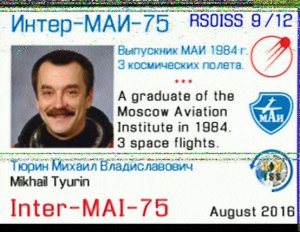IARU Region 2 agrees to 15m satellite allocation

IARU Region 2 Executive Committee 2019-2022
The 20th General Assembly of IARU Region 2 in Lima Peru ended on Wednesday, October 3, 2019.
Participating in the Assembly were a total of twenty member societies, fifteen of them present and the other five participating via proxy, as follows:
 Present:
Present:
Canada, United States, Mexico, Guatemala, El Salvador, Colombia,
Trinidad & Tobago, Curacao, Barbados, Brazil, Chile, Argentina,
Honduras, Uruguay, Peru
By proxy:
Dominican Republic, proxy to El Salvador
Costa Rica, proxy to Honduras
Venezuela, proxy to Peru
Panama, proxy to Guatemala
Ecuador, proxy to Canada
During the third plenary, the presidents and secretaries of the different working committees presented their proposals, which were analyzed and discussed and voted by the delegates.
In administrative matters, the main issues addressed were the proposed modifications to the IARU Region 2 Constitution and Bylaws, which were all approved by the participating member societies to comply with current banking requirements.
Regarding band planning, the recommendation that 21,125 to 21,450 kHz in the 15-meter HF band be used for satellite communications on a non-exclusive basis was accepted, which will be aligned with the allocations in the other regions and will be used for uplinks. The satellite coordination group proposed:
a) the creation of a Satellite Communications Workshop;
b) that a representative of the Satellite Coordination Panel be present in this Workshop;
c) that the Panel maintains communication with all IARU R2 member societies.
The Financial Committee analyzed the financial documentation and issued a favorable verdict regarding the approval of the financial statements and the approval of the budget for the next three years of operation.
Proposed by Radio Club Argentino, and voted by the General Assembly, Buenos Aires will be the venue of the 21st General Assembly in 2022.
 At the end of the meeting, the General Assembly carried out the election of Executive Committee members, and the following persons were elected for the next three years:
At the end of the meeting, the General Assembly carried out the election of Executive Committee members, and the following persons were elected for the next three years:
Officers:
President Ramón Santoyo, XE1KK
Vice-president José Arturo Molina, YS1MS
Secretary George Gorsline, VE3YV
Treasurer John “Jay” Bellows, KØQB
Directors:
Area A Director George Gorsline, VE3YV
Area B Director John “Jay” Bellows, KØQB
Area C Director Ramón Santoyo, XE1KK
Area E Director Tommy Chen, 9Y4T
Area F Director Gustavo de Faria Franco, PT2ADM
Area G Director Carlos Beviglia, LU1BCE
This Executive Committee will start its functions on November 15 of this year.
In the photo above are the new Executive Committee: Left to right: Carlos Beviglia, LU1BCE; Jose Arturo Molina, YS1MS; Ramon Santoyo, XE1KK; Jay Bellows, KØQB; Tommy Chen, 9Y4T;
George Gorsline, VE3YV; and Gustavo de Faria Franco, PT2ADM.
The General Assembly thanked Radio Club Peruano for hosting the Assembly and for their excellent organization and the help provided.
In a subsequent Executive Committee meeting, outgoing President Reinaldo Leandro, YV5AM, thanked Noel Donawa for his more than 20 years of volunteer service and Ernesto Syriani for his contribution as Area G Director, both will not continue as Executive Committee members. Then, he welcomed new members, explained them about the current working methodologies and encouraged member societies to participate more actively in the organization. He also thanked the coordinators and volunteers that cooperated so that the 20th General Assembly of IARU-R2 was successful.
More information is available in:
http://www.lima-2019.net/
http://www.iaru-r2.org/
Joaquin Solana, XE1R
Editor de Noticias – News Editor – IARU R2
Get The Details…
m5aka
AMSAT-UK
Powered by WPeMatico








 Present:
Present: At the end of the meeting, the General Assembly carried out the election of Executive Committee members, and the following persons were elected for the next three years:
At the end of the meeting, the General Assembly carried out the election of Executive Committee members, and the following persons were elected for the next three years: